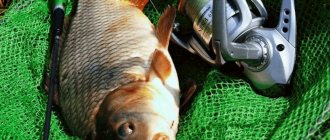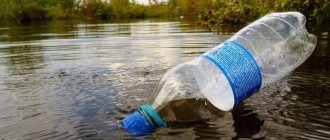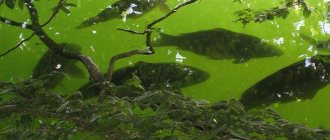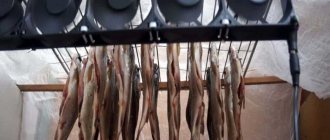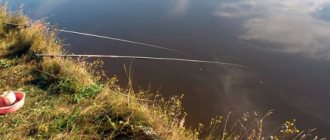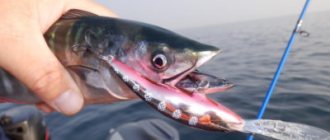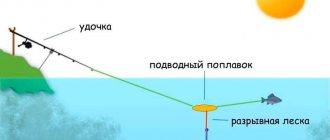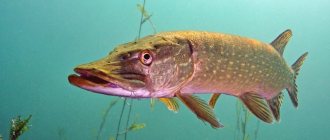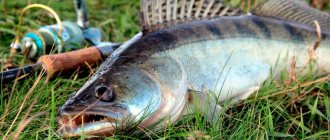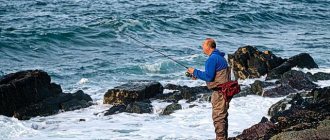Catching white fish with spinning video. Catching white fish with a spinning rod such as asp, podust, syrt or vymybets, ide, chub, rudd, blade, bleak is, first of all, the selection of baits and the choice of place, be it a river or a bay, but sometimes in spring or summer on small lakes you can get a freebie catch white fish without using any tricks using a homemade spoon spinner atom 2 rybachil.ru or an ordinary spinner, which can be seen in this video.
White fish on a spinning photo. The difference between fish from each other such as asp, podust, syrt at not large sizes is minimal and in order to decide on the species you need to be a good ichthyologist, and in this case the caught fish resembling asp was no different from sheresper, only the lips are not the same as seen in the video , where, having tried, I could not open the fish’s mouth wide as they turned out to be too narrow and not suitable for the owner of the rivers and currents with his thick “lipped slippers.”
Photo of asp fish caught on a lure atom rybachil.ru In addition, fishing for white fish on a spinning rod was carried out in a small lake with limited space, and there was no flood of the Volga River for several years when the flood meadows were flooded with high water and the species of fish in a relict place was not placed the surmountable task of answering what kind of miracle is this? Catching an asp with a spinning rod in central Russia on an atom spinner in late spring or early summer when it rushes into the river bays after the emerging fry has saturated the shallow water in abundance, sometimes sharp pokes accompanying the spoon, but not as not allowing the fish to hook, lead to bewilderment and only when caught Asp, you understand that this is a white predator going out to hunt for fry and not large fish. It is worth noting that in all cases, catching white fish with a spinning spinner with an atom 2 spinner was carried out with a fast retrieve of the spinner and the created disturbances in the water of the spinning spinner attracted its attention. Catching white fish with a spinning rod on a spinner is not uncommon; a bleak actively grabbing a spoon resembling insects caught in the water is perhaps an exception, since the size of the spoon and the size of the white fish are not too different from each other and only the video of the catch confirms this. Photo of catching white bleak fish using a spinning rod on a turntable. Fishing for bream, grass carp, rudd with a spinning rod is possible in Akhtuba, the interfluve or the routs of the lower Volga and Astrakhan; for the Nizhny Novgorod region, ide with chub on small rivers is more a matter of luck and skill of the fisherman.
rybachil.ru
Non-predatory white fish, under certain circumstances, exhibit a predatory instinct and expand their diet at the expense of fry. At this time, you can catch it with a spinning rod, a lure, a wobbler and other baits that everyone uses to catch pike and perch.
But if instead of pike perch and pike you come across a heavy bream or carp, usually spinning anglers are not against this turn of events, they take advantage of the situation and purposefully catch non-predatory fish with a spinning rod. What circumstances force white fish to take spinning baits, and how to succeed in such fishing... It is especially interesting that the largest individuals of the carp family most actively hunt for fry.
Under what conditions is white fish caught using a spinning rod?
It is known that occasionally spinners come across representatives of the non-predatory world using spinners, wobblers and silicone, most often rudd, bream, crucian carp, and silver bream. But there are also roach, carp, bleak...
Under certain conditions, the bite of white fish on spinning baits ceases to be an accident and becomes constant and confident.
- After floods caused by rain or melting, a lot of demolished, weakened, broken small things accumulate in quiet places on the rivers. It's not just predators who flock to this feast. Here, large white fish are regularly caught with a spinning rod for several days or weeks.
- In winter stopover areas, in dense schools of fish, competition for food becomes very high. This leads to the fact that all large non-predators begin to feed on the fry as well. Let's take a closer look at how this happens.
White fish become a predator in wintering pits
In the second half of autumn, in rivers and lakes, dense schools of white fish cling to the deepest pools, which are usually known to anglers and are called wintering holes. In flocks there is high competition for food. Nearby there are large schools of fry that have moved away from the shallow shores. The presence of such food, which is easy to obtain, cannot but provoke white fish.
The situation is also fueled by slow digestion in cold water, when hard-to-digest plant food is not welcomed by large fish, but animal food, including small fish, is considered tolerable. It has been noticed that even pike, which mainly feeds on larger fish, in the pre-winter time switches to small fish, and begins to be caught exclusively with small baits, and the caught specimens sometimes have fry strung on their teeth.
When and where do you catch white fish on a spinning rod?
Whatever the theory, the facts are that the autumn-winter period is the time when white fish are guaranteed to be caught using spinning rods in their wintering areas. This happens all the time in most bodies of water, including even lakes and stakes, where the fish are usually not so aggressive. Nevertheless, even there, “cold and hunger” and the presence of food nearby, for which there is no need to travel, at a time when the fish has minimal energy and movements are slow, force carp fish to be predators. The largest carp are also caught using spinning baits, but we will talk about this later... Summer incidents, when a lot of easily accessible fry appear, are rather random in nature. Nevertheless, experienced spinners can take advantage of such circumstances.
What to catch
Whitefish sites are usually not close to the shore, so a long cast is required. At the same time, very light baits are used - spinners No. 0, No. 00, microwobblers, microjigs, streamers, wabiki, or just a hook with some kind of thread... To throw all this you need additional weight. But the rod is usually used light or even ultra light if you are fishing not far away. The rod should be of a soft action, whip-like, which is called “poly” - for powerful casting of light equipment. The fishing line is the thinnest, and soft monofilament or braided material of appropriate quality - with a minimum of windage. For example, for zeroing a spinner, a soft monofilament with a diameter of only 0.12 - 0.13 mm is recommended... A coarse and cheap reel cannot be used to work with this fishing line.
Features of baits
Nulevka spinners often work better in the middle layers of water, and rudd and roach are caught well. The smallest versions with a propeller tempt bleak, roach, and dace.
For bottom-dwelling bream and silver bream, as well as ide, microjig baits and streamers are more tempting. In this case, the wiring is near the bottom - the smallest step.
What spinning bait for bream, silver bream and carp
Bright little twisters are a universal bait for spinning fishing for large bottom fish in cold water - bream, ide and carp. But their use is possible on a long lead leash.
Also catching white fish is small foam rubber, which, as you know, creates more noise in the water. A foam rubber fish for catching large white fish looks something like this:
- length no more than 70 mm (it’s better to start with the smaller one), with a diameter of up to 10 mm. The bait is used in conjunction with a small double...
Hook - a small double, possibly decorated with thread or beads, is an excellent bait, installed at some distance (50 - 100 cm) from the sinker, or the main bait. When a fish simply butts a bulky bait, then most likely the smaller option, in particular a bare hook, will take it confidently, which has been repeatedly tested in practice
There are also many more options available, which will be discussed below...
Wiring along the bottom
A special technique for catching large white fish is that the jumps are made especially short, the bait literally plows the bottom, raising turbidity. Slow retrieval with short jumps allows the sluggish fish to catch up with the irritating object. In this case, the jump is made literally in a quarter turn of the spinning reel handle.
The sinker does not come off the bottom in any noticeable way, but rather kicks up clouds of silt. If a light bait is installed on a retractable leash, then it will make more sweeping movements, more noticeable and noisy for the fish.
What other rigs and baits work?
- A drop-shot rig, where the bait is on the main line above the sinker, works well. Wiring features are selected.
- A tandem bait for white fish also works - up to 3 pieces are tied to a heavy jig on short 2 - 3 cm hard leashes. jigs, which are usually decorated with beads or living creatures (replanting). At the same time, after each step it is useful to take a noticeable pause or stretch very slowly.
- Jig spinners are a classic bait for autumn fishing for white fish. At the same time, the dimension of the round petal is 5 – 7 mm.
- Small silicone baits. Often they are made independently, cutting off excess silicone with scissors from summer options. They work great on all white fish, including carp, especially the noisy ribbed versions...
Fishing for carp with a spinning rod
Where there are a lot of carp, especially in well-flowing reservoirs and rivers, a spinning angler can count on success during autumn fishing. It is known that in the pre-winter period large carp take animal food well. Malek, pieces of fish, baits made from fishmeal are often the best baits for carp at this time.
A good bait for carp is the same small spinner jig. Loading – no more than 10 grams, otherwise the balance of the entire equipment will be disrupted. The bite occurs at the beginning of the step (when rising from the bottom) and is felt as a soft hold, which gradually turns into a powerful pull for a couple of tens of meters.
The place of bites is a drop to depth, the border of a hole, an edge from shallow water. Sometimes, carp go aground, but only on the one adjacent to the main deep-sea anchorage. If such an area exists, then it also needs to be fished. For such fishing, you need a spinning rod and a reel of appropriate power, a soft blank, and a slow action.
Wading fishing with zero spinners
At the border between the shallows and the cliff in the depths, it is not uncommon to observe white fish hunting for fry. From the outside it looks as if a rudd or something larger is attacking insects on the surface - small whirlpools, eddies, and breakers occur without a splash. But there are no insects in the cold air, but a small fry moved from the shallows to the depths, and schools of bream and carp rose to meet it...
When white fish hunt for fry during the day, small zero-rated spinners, drawn along the surface and into the floor of the water, work well. But the problem is that it is often impossible to get them to such feeding areas from the shore. Instead of using too heavy equipment, it is better to fish in a wade, reducing the distance with the schools as much as possible. At the same time, the thickness of the monofilament line is no more than 0.14 mm. But for this you need the appropriate equipment...
klev-tut.ru
This fishing trip is probably in my top 5 best fishing trips of 2015. Great weather, perfect campaign, and the fish were biting. So, attention))
We decided to devote one of our Saturday fishing trips to catching bleak, and as a reward for good behavior we received several bonuses
